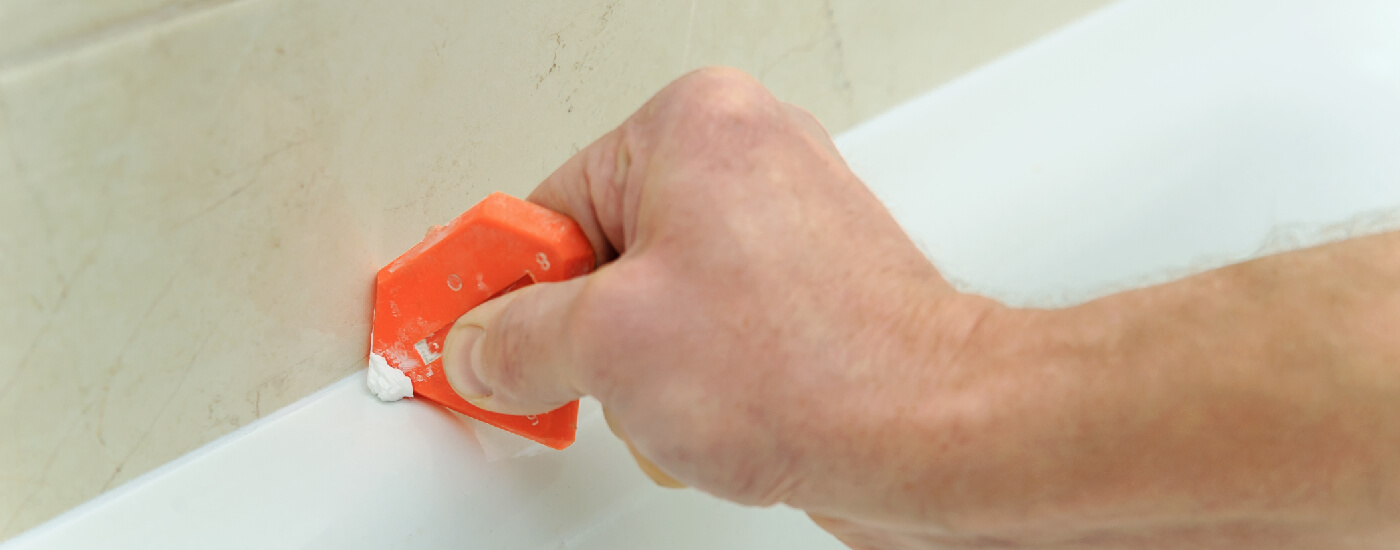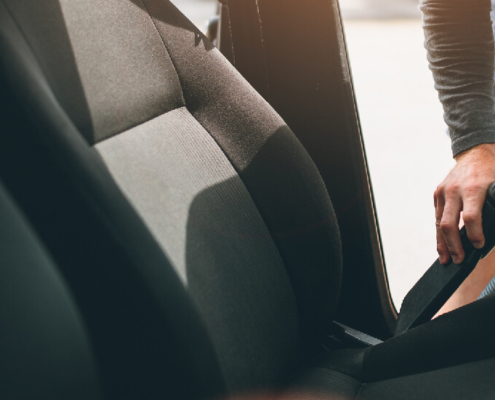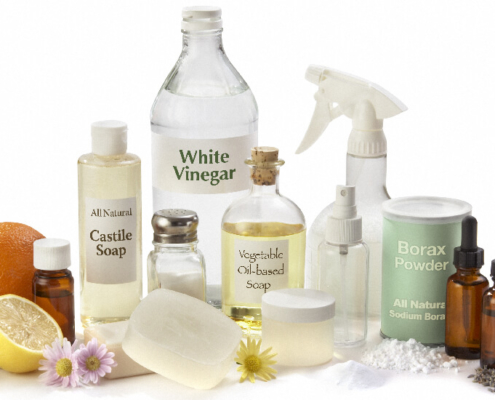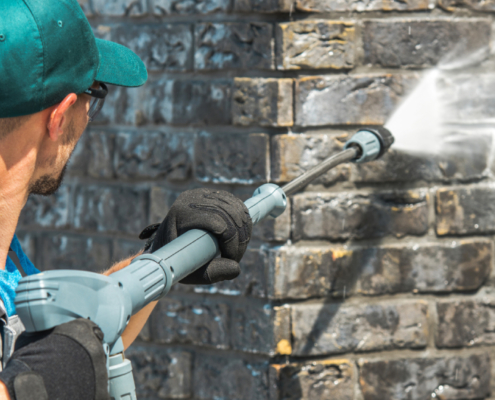How To Clean Caulk Effectively
Cleaning caulk is very important in order to maintain hygiene standards within a home. Caulk is ideal in locations where dirt piles up over time. The damp conditions within caulk make it ideal for the formation of mold. This, in turn, causes unpleasant sights within a home.
The removal of old and dirty caulk is a good idea. However, one does not have to remove caulk just because it is not clean. You can clean caulk and make the best out of it thereby making it needless to replace. There are various useful tips that can be applied when cleaning caulk.
Always ensure rooms are sufficiently ventilated before cleaning caulk. The materials used when cleaning caulk (such as ammonia) can be harmful when inhaled. It is therefore advisable to ensure that there is plenty of free-flowing air before starting the operation.
You should also ensure that you wear safety gear before you start cleaning. Gloves and a respirator should be worn for precautionary measures. Bathrooms are not usually well ventilated hence the need for a respirator. Gloves are worn to protect you from dangerous cleaning agents that can harm your skin such as concentrated bleach.
Assembling of tools should be done to make the cleaning of caulk easier. Sponge, brooms, scrubbing brushes and old toothbrushes should all be on hand to ease the job. Cleaning agents also need to be sourced prior to the cleaning. Plenty of warm water for rinsing and washing the surfaces after cleaning should be prepared.
Use a brush to gently wipe out any dust that might be present on the surface. This helps in greatly reducing the risk of spreading dirt that could have otherwise been simply wiped. This not only gets rid of dust but also any other debris within the caulks.
There are various cleaning agents that can be used to effectively clean caulks. Ammonia and bleach are toxic cleaning agents that very effective. Vinegar, hydrogen peroxide and baking soda are non-toxic cleaning agents. They can be used to clean caulks.
The most commonly used cleaning agent is bleach. Bleach is easily available within most homes. One should always wear gloves when cleaning caulks using bleach. Bleach should be mixed with water to create a bleach solution. One cup of bleach should be diluted with ten cups of water.
Spray the bleach solution onto the surface where the mold is. Make sure you spray it evenly throughout the surface. The bleach solution enters the spores of the mold thereby killing them.
Cotton coils can also be used to reach further within the caulk. This can be applied when the spray’s effect is not being felt. The bleach solution should be left for about 30 minutes in order for all the organisms within the caulks to die.
You should, however, pay attention to any surface that can be discolored. Bleach can lead to the discoloration of surfaces when applied. If surfaces such as tiles can be discolored by the use of a bleach solution, it would be wise for you to use any other cleaning agents. Baking soda would be ideal for such as a situation.
After 30 minutes elapse, you should start scrubbing the surface gently. The dirt that is within the caulks will start to come out. Vigorously scrubbing caulks can damage them. Sponges and toothbrushes can be used to efficiently clean the caulks.
Make sure you rinse thoroughly with warm water after scrubbing is complete. If the desired result has not yet been achieved, you should pour the bleach solution again within the caulks and repeat the procedure. This should be done until the desired result is achieved. The mold should then be washed away to completely remove their dead spores.
Cleaning of caulks should be done regularly. Mold and dirt will form within caulks if this is not done. Readily available cleaning agents such as bleach should be kept within the house. Immediately you notice the formation of mold within caulks, cleaning should take place. This will end up making your home spotless and habitable.
Well ventilated rooms are less likely to form mold. Damp rooms such as bathrooms are more prone to their formation. Warm and moist environments are very conducive for their formation. It is therefore important to ensure that all rooms are free of dampenss or condensation.
The Door Furniture
The handles on glass sliding doors often become greasy and can look for dingy. These handles need to be cleaned regularly with soapy water and a damp cloth. You should also pay attention to the other side of the handle. This area may not be visible but dirt and grease definitely accumulate in this area. Any door furniture that is metal needs to be lightly polished after you have cleaned them.
The Door Frames
The frame of a glass sliding door is usually handled frequently and it is common for this area of the door to feature smears and smudges where dirt and grease from hands will collect. The bottom part of the door frame, especially the threshold usually collects dirt from people that walk over it. Cleaning these areas should involve a damp rough cloth or even a strong scouring pad. The top part of the frame that is exposed will also tend to gather dust. Make sure you dust this area with a clean and dry cloth and when necessary wipe the areas down with warm soapy water. Make sure when you clean the door that you wipe the entire frame down with a cloth that is slightly damp. If you encounter stubborn marks they will require a bit more attention. The troublesome areas might benefit from a bit of scrubbing using a mild detergent and some soapy, warm water. Always make sure that you wipe away any soap residue.
The Door
The edges of your sliding door are more than often used in place of the handle. For this reason, it is a good idea to wipe both of the edges using a slightly damp cloth. Make sure you also clean and wipe the frames that surround the glass.
The Rails
In most cases, a sliding glass door operates off a central-rail which is located on the bottom of the door’s frame. These rails often collect dirt very quickly, which can have an effect on how smoothly your door opens or closes. Wiping this rail will usually be enough, but from time to time you may need to wipe over the rail using an oily cloth. It is also important to vacuum the rail to extract any dirt or grit which has collected on each side.
The Glass
The glass on both the outside and the inside will need to be cleaned using a mild water and detergent mixture. The solution should be weak enough that it is not able to make bubbles if agitated. Use a soft cloth to gently scrub the glass from top to bottom. Use a dry cloth or newspaper to thoroughly dry the doors and to prevent streaking. The newspaper is effective at absorbing any moisture. It will also remove the scum layer which may have stayed on the glass. The end result should be a sparkling high gloss.
If you find that the glass is not completely clean and free from smudges after these steps, especially when smears and fingerprints have been left behind, you are going to require something that is a bit more astringent. A concentrated solution of white-vinegar and a little bit of water applied using a leather chamois should be an effective solution to remove all the marks. Ensure that you dry the glass using newspaper which should return your glass sliding doors to a shiny full gleam.
If you find after all these steps that there are still marks left behind, make sure you avoid trying to remove them with a sharp object such as razor blades. This is a procedure which is only suitable for standard glass. As a last resort use neat vinegar to try and rub away the marks with a clean kitchen towel. If this fails to remove the marks, then it is more than likely that the mark is actually a scratch which has been etched in the glass.






